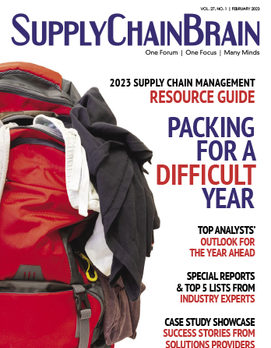
Home » Choosing the Right Metrics to Drive Supply Chain Success
QUALITY AND METRICS
Choosing the Right Metrics to Drive Supply Chain Success
February 6, 2023
 Analyst Insight: Supply chain management is central to an organization’s operations and business success, so picking the most relevant performance metrics is crucial. The need for employee engagement and retention in a tight labor market adds an additional challenge, but is also an opportunity if firms implement performance measures strategically.
Analyst Insight: Supply chain management is central to an organization’s operations and business success, so picking the most relevant performance metrics is crucial. The need for employee engagement and retention in a tight labor market adds an additional challenge, but is also an opportunity if firms implement performance measures strategically.
Beginning in 2020, many supply chain organizations put aside their usual processes and standards to deal with disruptions brought about by the pandemic. As the crisis settles, many organizations are ready to move beyond survival mode and return to the strategic use of internal and external metrics. In fact, the highest performing organizations never stopped capturing data, positive or negative, and can now use it to quantify gaps and improvements in performance.
Ideally, firms carefully choose supply chain metrics that align with business goals and desired behaviors. But too often, leaders choose metrics based on trends or past habits. Another common temptation is to measure only those factors that indicate success, and avoid those that shine a light on performance gaps. Finally, firms should avoid the practice of casting out all data from 2020 to 2021 as an “anomaly,” and instead seek insights from the information gathered during that time period of intense pressure.
To avoid these pitfalls and instead use data to drive performance, supply chain leaders should choose metrics that are:
Strategic. With input from senior management, choose measures that align with the highest priority business processes and organizational goals.
Balanced. Choose measures that capture a range of different and potentially competing priorities such as cost, quality, customer outcomes and cycle times. This ensures that some goals, such as quick delivery times, don’t come at the expense of other goals, such as quality or cost targets.
Simplified. Highlight the most important data by choosing no more than 10 metrics per single dashboard.
Contextual. Data without context is meaningless. To be able to act on information, present data points in relation to prior time periods, to highlight areas of success and opportunities for improvement. For greater context, incorporate external benchmarks to compare performance against peers.
Performance and quality ultimately rest on the people within a supply chain organization. To ensure buy-in from employees, leaders should:
Use behavioral measures. Incorporate behavioral measures into individual performance evaluations. Reward desired behaviors using standardized definitions for data and processes, so that employees know exactly what’s expected, and see that metrics are applied fairly.
Be encouraging, not punitive. When packaged effectively, behavioral measures signal that an organization cares about the professional development of its workforce. Communicate rewards and performance improvement opportunities as initiatives being done for employees, not to them.
Engage employees. In the current labor market, supply chain leaders are wise to use performance metrics to promote a corporate culture that focuses on quality and allows employees to feel that they’re part of a larger mission. Research has consistently revealed that when employees feel more engaged with an organization’s culture, job satisfaction and retention metrics also improve.
Outlook: In 2023, organizations must be intentional in picking the right measures that align with their business objectives, and balancing those measures across a range of priorities. Data can be a powerful instrument to gain competitive advantage. Supply chain leaders can harness this tool by thinking strategically and considering all angles when choosing the metrics that will drive organizational and individual behavior.
RELATED CONTENT
RELATED VIDEOS
Subscribe to our Daily Newsletter!
Timely, incisive articles delivered directly to your inbox.
Popular Stories

2023 Supply Chain Management Resource Guide: Packing for a Difficult Year
VIEW THE LATEST ISSUECase Studies
-
JLL Finds Perfect Warehouse Location, Leading to $15M Grant for Startup
-
Robots Speed Fulfillment to Help Apparel Company Scale for Growth
-
New Revenue for Cloud-Based TMS that Embeds Orderful’s Modern EDI Platform
-
Convenience Store Client Maximizes Profit and Improves Customer Service
-
A Digitally Native Footwear Brand Finds Rapid Fulfillment



